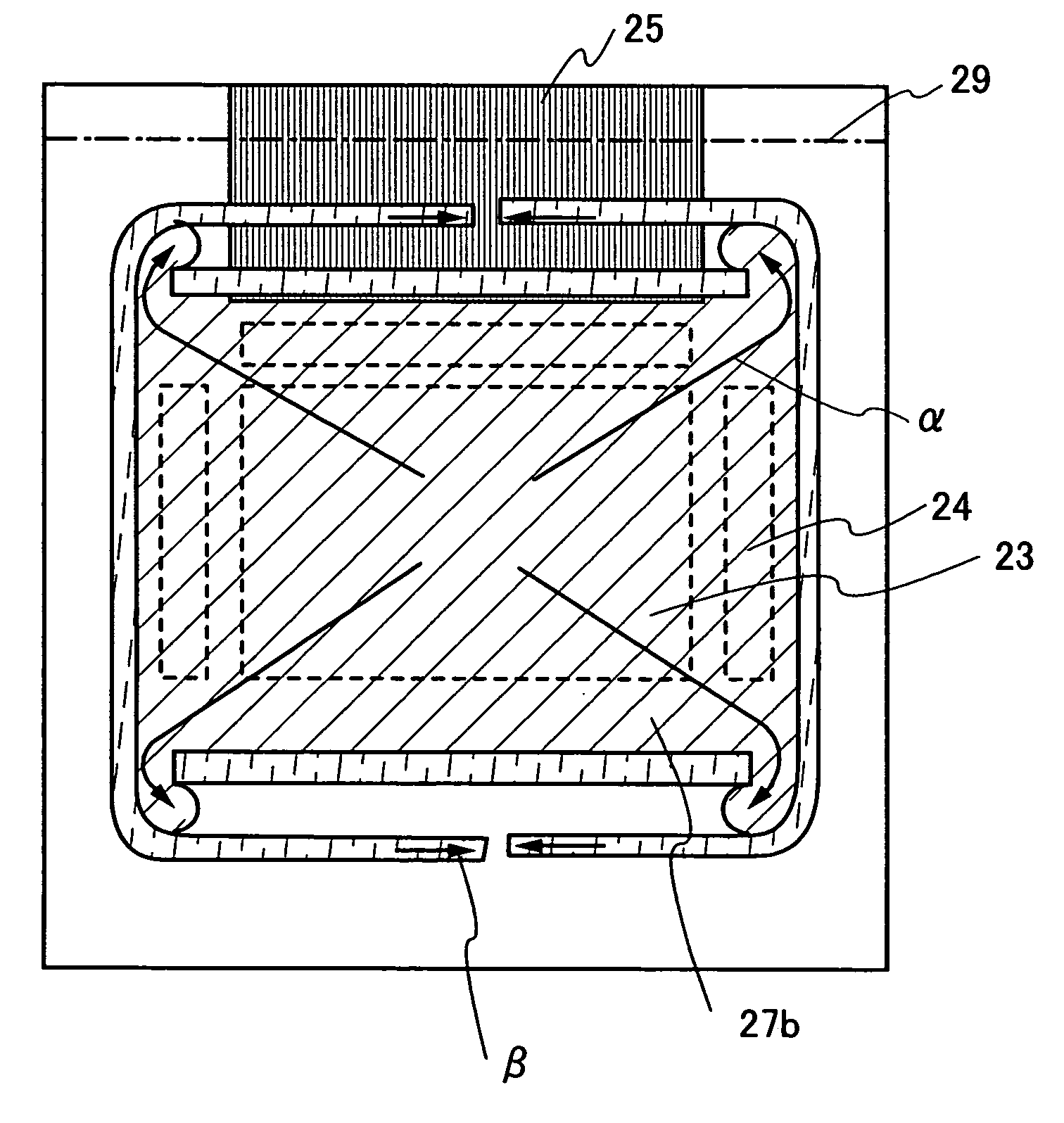Light emitting device and method for manufacturing the same
a technology of light-emitting devices and manufacturing methods, which is applied in the direction of discharge tubes/lamp details, organic semiconductor devices, discharge tubes/lamp details, etc., can solve the problems of reducing the lifetime of light-emitting elements, and reducing the light-emitting efficiency of light-emitting elements
- Summary
- Abstract
- Description
- Claims
- Application Information
AI Technical Summary
Benefits of technology
Problems solved by technology
Method used
Image
Examples
embodiment mode 1
[0038]FIG. 1 is a top view of an active matrix light emitting device according to the present invention as disclosed in the specification.
[0039]In FIG. 1A, reference numeral 11 denotes a first substrate; 12, a second substrate; 13, a pixel portion; 14, a driver circuit portion; 15, a terminal portion; each of 16a and 16b; a first sealing agent; and 17a, a second sealing agent.
[0040]Though the material for the first substrate 11 is not particularly limited, the first substrate is preferably formed of a material having a same thermal expansion coefficient as that of the second substrate 12 from the viewpoint of attaching to the second substrate 12. In the case of the bottom emission structure, the first substrate 11 is formed of a substrate having a light transmitting property such as a glass substrate, a quartz substrate, and a plastic substrate. In the case of the top emission structure, a semiconductor substrate, a metal substrate, and the like can be used, too. Further, in the cas...
embodiment mode 2
[0053]A part of the cross sectional structure of a pixel portion according to the present invention as disclosed in the specification will hereinafter be described with reference to FIG. 3A.
[0054]In FIG. 3A, reference numeral 300 denotes a first substrate; each of 301a and 301b, an insulating layer; 302, a TFT; 308, a first electrode; 309, an insulator; 310, an EL layer; 311, a second electrode; 312, a transparent protective layer; 313, a second sealing agent; and 314, a second substrate.
[0055]The TFT (a p-channel TFT) 302 formed over the first substrate 300 is an element for controlling the electric current flowing through the EL layer 310 that emits light. Reference numeral 304 denotes a drain region (or a source region). Reference numeral 306 denotes a drain electrode (or a source electrode) for connecting the first electrode and the drain region (or the source region). Further, a wiring 307 such as a power supply line and a source wiring is formed simultaneously with the drain e...
embodiment mode 3
[0072]FIG. 4 shows a case of forming a plurality of pixel portions on one substrate, that is, an example of multiple patterns. An example of forming four panels on one substrate is shown here.
[0073]As illustrated in FIG. 4A, a first sealing agent having first patterns 32a and second patterns 32b is formed in predetermined positions over a second substrate 31 under an inert gas atmosphere by using a dispenser apparatus. As for the first translucent sealing agent 32a and 32b, a material including filler (6 μm to 24 μm in diameter) with the viscosity of 370 Pa·s is used. Since the first sealing agent 32a and 32b are simple sealing patterns, they can also be formed by the printing technique.
[0074]As depicted in FIG. 4B, a second sealing agent 33, which will have a light transmitting property after being cured, is dropped into each region surrounded by the first patterns 32a and second patterns 32b of the first sealing agent (note that, openings are formed between the edges of the first ...
PUM
 Login to View More
Login to View More Abstract
Description
Claims
Application Information
 Login to View More
Login to View More - R&D
- Intellectual Property
- Life Sciences
- Materials
- Tech Scout
- Unparalleled Data Quality
- Higher Quality Content
- 60% Fewer Hallucinations
Browse by: Latest US Patents, China's latest patents, Technical Efficacy Thesaurus, Application Domain, Technology Topic, Popular Technical Reports.
© 2025 PatSnap. All rights reserved.Legal|Privacy policy|Modern Slavery Act Transparency Statement|Sitemap|About US| Contact US: help@patsnap.com



